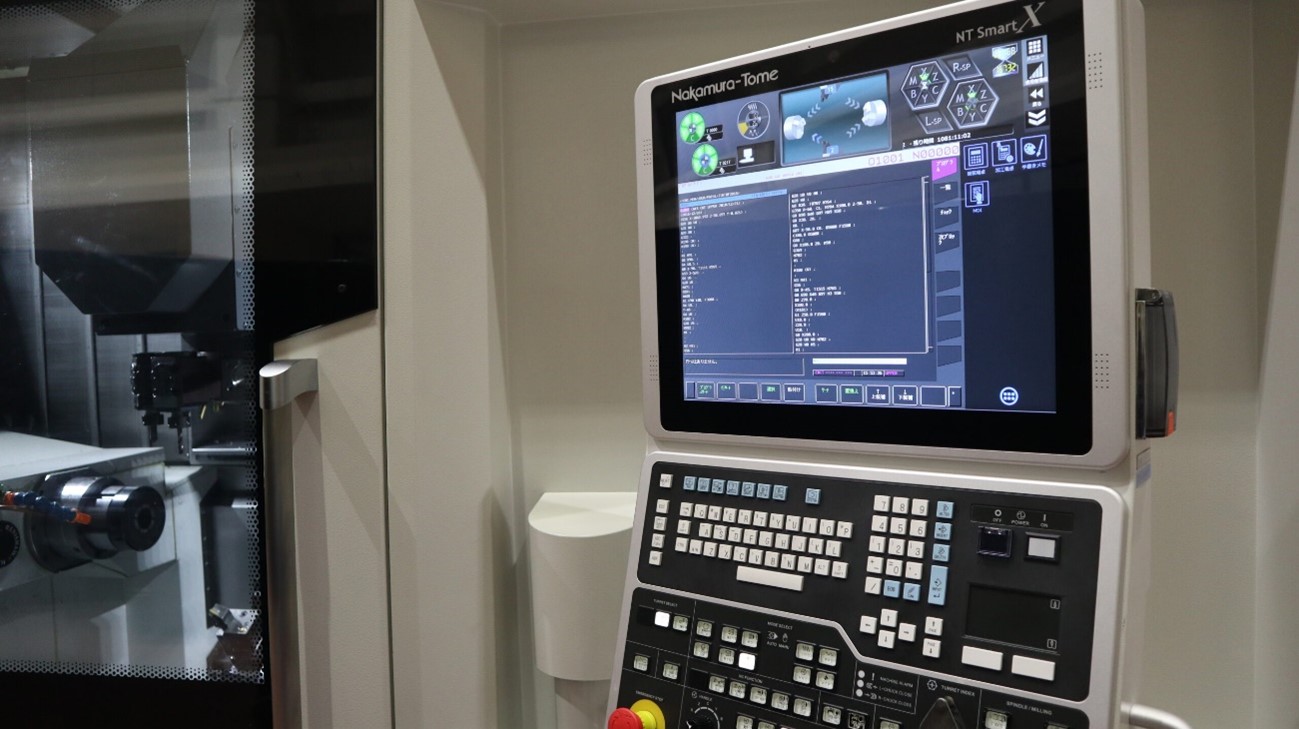1. Introduction
CNC lathes can automatically machine workpieces by setting the tool position information and instructing the tool path with an NC program. Once the program is created, it can perform high-precision machining repeatedly.
The cycle time per product is determined by the created NC program, but by reviewing and optimizing this program, the cycle time can be shortened. This article explains the key points of cycle time reduction that manufacturing engineers implement.
2. The Concept of Cycle Time
Cycle time refers to the processing time per workpiece, specifically the time from the start of automatic operation to the end of the program, and it can be broadly classified into two categories:
- Idle Time: The periods when a machine is not actively engaged in production tasks.
- Cutting Time: The portion of the cycle time during which the machine actively performs cutting or machining operations on the workpiece.
Changing the cutting time means changing the cutting conditions, which may affect the processing. Therefore, rather than adjusting the cutting time, which affects the workpiece precision, the idle time is minimized to eliminate wasted time and achieve time reduction.
Reviewing cycle time starts with “reviewing idle time.”
3. Points for Reducing Idle Time
To reduce idle time, it is essential to thoroughly understand the series of operations.
Repeatedly perform dry runs, observe the idle time, cutting time, and machine operations, and identify opportunities to shorten the time by checking for unnecessary movements and waiting times. Recording the operation and reviewing the video to find points for reduction is also a good idea. Looking for points from the perspective of whether simultaneous operations are possible may reveal additional opportunities for time reduction.
- Examples of simultaneous operation:
- -Performing task A while performing task B.
- -Doing task C during the stop of rotation.
This approach absorbs the time of one operation by performing it simultaneously with another.
4. Methods to Shorten Idle Time
Since idle time is the non-cutting time, focus on optimizing positioning at the rapid traverse, retraction operations, spindle acceleration and deceleration, M-code completion timers, turret indexing, and dwell time.
4-1. Positioning at the Rapid Traverse and Retraction Operations
Whenever possible, perform rapid movements of the X-axis and Z-axis simultaneously. Set the retraction position to the minimum required for turret rotation (do not return to the machine origin).
- Example:
- G00Z10.0 → G00X50.0Z10.0
- X50.0
- Example:
- G28U0W0 → G00X200.0Z50.0
4-2. Spindle Acceleration and Deceleration
The spindle rotation does not instantly reach the commanded speed; it requires time for acceleration and deceleration.
The spindle stop command can be particularly effective in reducing cycle time. M05 is an M-code that completes only after the rotation has completely stopped. This means the program waits and does not proceed to the next line until the spindle stops.
By advancing the program to the next line during this wait time, other operations, such as returning to the origin or turret indexing, can be performed while the spindle is stopping.
Our machines have an M-code for time reduction that does not confirm the completion of actions, thus advancing to the next line without confirmation. Utilizing this M-code achieves time reduction.
- Example:
- G00X200.0Z50.0 M05 → G00X200.0Z50.0 M205 (Spindle stop command only)
- Example:
- G28U0W0 → G28U0W0
- M05 (Spindle stop and confirmation)
4-3. Turret Unclamp
A turret is usually clamped hydraulically. Without an unclamp operation, it cannot rotate. Our machines have M702, an M-code for pre-unclamping, which shortens turret indexing time by unclamping in advance.
- Examples:
- -G00X200.0Z50.0 → G00X200.0Z50.0 M702
- -M01 → M01
- -N3G54M41 → N3G54M41
- -G00G40G97G99T0202S2000M03 → G00G40G97G99T0202S2000M03 (immediate rotation as unclamped in advance)
- -X50.0Z2.0 → X50.0Z2.0
4-4. Dwell Time
Dwell commands stop the program for the specified time, directly affecting cycle time. Reviewing times specified by each dwell command in the program and adjusting unnecessary waits results in cycle time reduction. However, overly reducing the times such as chuck opening/closing can lead to adverse outcomes, so only eliminate unnecessary times. Focus on whether dwell times in operations like grooving or at the end of drilling are excessive.
- Example:
- G83Z-30.0P1000F0.1 → G83Z-30.0P100F0.1
- Examples:
- G01Z-30.0F0.1 → G01Z-30.0F0.1
- G04U0.5 → G04U0.1
5. Summary
The examples introduced are relatively easy to implement, so please refer to them.
While reducing cycle time by 0.1 seconds in one place might seem minimal, it can save a few seconds per cycle. Even a 1-2 second reduction per workpiece can add up to 300-600 seconds when producing 300 pieces per day.
While reducing cycle time is crucial for improving productivity, it also carries the risk of machine collisions. Thoroughly check the program and ensure no interference before starting continuous operation.


